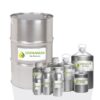DESCRIPTION
History of Cedarwood Oil :
Cedar oil, often referred to as cedarwood oil, is an oil that is derived from varieties of conifers like trees in the pine or cypress families. Traditionally, cedar oil has been used for a wide variety of medicines, perfumes, cleaning products, protectants and pesticides.
Cedarwood oil has been used as a safe and effective solution for pest control for more than 1000 years. The first documented use of cedar oil was by Ancient Egyptians who often used cedar oil in the embalming process in order to deter insects from invading corpses. The ancient Greeks used cedar oil in order to ward off infection, and would often use cedar oil on papaya leaves to prevent insect infestation. During the middle ages, Europeans used cedar oil to fumigate homes and streets that were infected with Diseases, rodents and insects. In the 17th century it was discovered that cedarwood oil was effective for treatment of coughs, symptoms of Tuberculosis and shortness of breath. In the modern times, Cedar oil has become well known as an all natural, non-toxic, safe solution for the control of insects and rodents in homes, offices, bams, yards and as a topical application on pets.
Distillation of Cedarwood Essential Oil:
Cedar trees have played a central role in aromatics right from ancient times. The origins of Cedarwood can be traced to the Himalayan valleys. It belongs to the family of pinaceae. The essential oil of cedarwood is obtained by steam Distillation of the wood cedrus deodara . It is free-flowing liquid with a pale yellow to brownish yellow colour. It has an appealing aroma that is dry, woody, warm and balsamic, with slightly crude camphoraceous top note. The product also Displays a slightly sweet, woody aroma. The product is mainly composed of alpha and beta himachalene. The oil is an excellent fixative and diluents that is used with other essential oils in soaps, cosmetics, perfumes, polishers, and leather goods. The product is also widely used in aromatherapy.
After Distillation Each Batch of oils is tested in VISHWNATH OILS PRODUCTS Labs By Senior Analyst and the constituents a-cedrene, b-cedrene, thujopsene, other sesquiterpenes, cedrol and widdrol.
Blends with Cedarwood Essential oil;
Cedarwood oil well blends with Clary sage oil, cypress, frankincense, Bergamot, cinnamon Bark oil, lemon oil , patchouli sandalwood, thyme and Vetiver oil.
Constituents of Cedarwood Essential oil:
After Distillation Each Batch of oils is tested in VISHWNATH OILS PRODUCTS Labs By Senior Analyst and the constituents a-cedrene, b-cedrene, thujopsene, other sesquiterpenes, cedrol and widdrol.
Uses of Cedarwood Essential oil;
For Skin: Cedarwood oil has anti-inflammatory and antimicrobial properties. This may make it beneficial for skin conditions like acne.
For Scalp Conditions: Massaging your scalp with a mixture of cedarwood oil and a carrier oil may also help reduce and soothe and itchy, flaking scalp. This may make it beneficial for treating dandruff and scalp eczema. You can also try adding four to five drops of cedarwood oil directly into shampoo and conditioner.
For Aromatherapy Treatment: Try inhaling Cedarwood Essential oil directly from the bottle, or sprinking a small amount on towel or cloth placing that under your pillow. You can also add cedarwood oil to an atomizer bottle and spray it on dried flowers or a lightbulb to gently scent your home.
Cedarwood oil as Cologne: the soothing, woodsy scent of cedarwood oil has made it popular ingredient in colognes and aftershaves. If you wish to use Cedarwood essential oil as your personal fragrance, dot diluted oil gently behind your ears or on your wrists or underarms.
Cedarwood oil For Hair loss: Alopecia areata is a diseases that cause the immune system to attack hair follicles leading to hair loss. Cedarwood is one of several essential oils that may improve hair Growth.
Precautions to use over Cedarwood oil:
Cedarwood oil is generally recognized as a safe by the U.S environmental Protective agency when used as an insecticide or food additive. Reports of skin irritation caused by cedarwood oil are rare.
Always Dilute essential oils in a carrier oil before applying topically. Do a patch test before using the oil to ensure it does not irritate your skin.
Cedarwood oil can be dangerous if ingested.
| BotonicalName | : | Cedrus deodora |
| CAS # |
: |
8000-27-9 |
| Country of Origin | : | India |
| Color & Odor | : |
Yellowish to brownish yellow viscous liquid with a dry woody aroma, slightly camphoraceous, smoky, balsamic, very subtle with a hint of spice. |
| Extraction Method | : | Steam Distillation |




Reviews
There are no reviews yet.